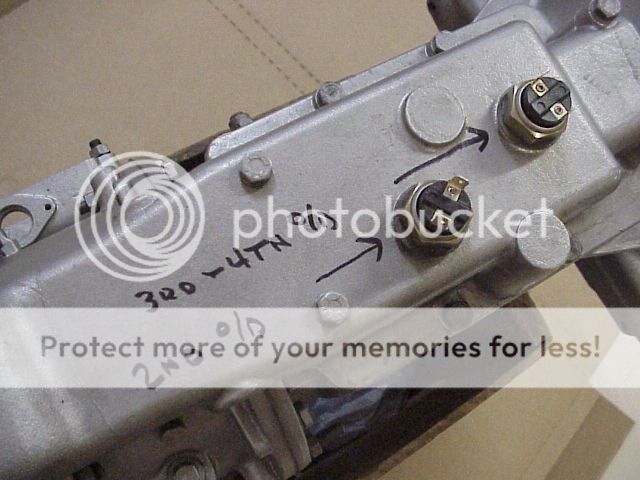Offline
All,
As I progress on my TR4A restoration work, I have (I think) sourced an A-type OD. I have never driven a car with a "manually" (i.e. via a switch) engaged OD. In other words, I know nothing about the matter! :smile-new:
I have read reports that engaging the OD in reverse is catastrophic. And that a properly operating OD cannot engage in reverse. Finally, there are a few threads on BCF on forgetting to dis-engage and accidentally engaging the OD, as the OD lever is close to the turn signal lever.
Much of this detail thanks to excellent BCF discussions and the write-up on the Buckeye Triumph web site:
https://www.britishcarforum.com/bcf/showthread.php?53177-Overdrive-controller-for-A-and-J- types
https://www.britishcarforum.com/bcf/showthread.php?30620-Shortened-my-Shift-lever
https://www.buckeyetriumphs.org/technical/AOD/AOD1/AOD1.htm
Shortening the OD lever seems an easy and prudent change. (Is this correct??)
More importantly, how can OD engagement in reverse be avoided? How is it possible to engage the OD in reverse? For example, imagine the scenario: driving in 4th gear, OD engaged. Then come to a complete stop by pushing the clutch pedal and braking (without downshifting). Then engage reverse, without disengaging the OD manually by the lever. Will the OD disengage automatically before releasing the clutch?
My questions are quite possibly naive - but really the point of the post is: how can one avoid OD destruction...?
As I progress on my TR4A restoration work, I have (I think) sourced an A-type OD. I have never driven a car with a "manually" (i.e. via a switch) engaged OD. In other words, I know nothing about the matter! :smile-new:
I have read reports that engaging the OD in reverse is catastrophic. And that a properly operating OD cannot engage in reverse. Finally, there are a few threads on BCF on forgetting to dis-engage and accidentally engaging the OD, as the OD lever is close to the turn signal lever.
Much of this detail thanks to excellent BCF discussions and the write-up on the Buckeye Triumph web site:
https://www.britishcarforum.com/bcf/showthread.php?53177-Overdrive-controller-for-A-and-J- types
https://www.britishcarforum.com/bcf/showthread.php?30620-Shortened-my-Shift-lever
https://www.buckeyetriumphs.org/technical/AOD/AOD1/AOD1.htm
Shortening the OD lever seems an easy and prudent change. (Is this correct??)
More importantly, how can OD engagement in reverse be avoided? How is it possible to engage the OD in reverse? For example, imagine the scenario: driving in 4th gear, OD engaged. Then come to a complete stop by pushing the clutch pedal and braking (without downshifting). Then engage reverse, without disengaging the OD manually by the lever. Will the OD disengage automatically before releasing the clutch?
My questions are quite possibly naive - but really the point of the post is: how can one avoid OD destruction...?

 Hey there Guest!
Hey there Guest!
 smilie in place of the real @
smilie in place of the real @
 Pretty Please - add it to our Events forum(s) and add to the calendar! >>
Pretty Please - add it to our Events forum(s) and add to the calendar! >> 


 A friendly reminder - be careful what links you click on here. If a link is posted by someone you don't know, or the URL looks fishy, DON'T CLICK. Spammers sometimes post links that lead to sites that can infect your computer, so be mindful what you click.
A friendly reminder - be careful what links you click on here. If a link is posted by someone you don't know, or the URL looks fishy, DON'T CLICK. Spammers sometimes post links that lead to sites that can infect your computer, so be mindful what you click.